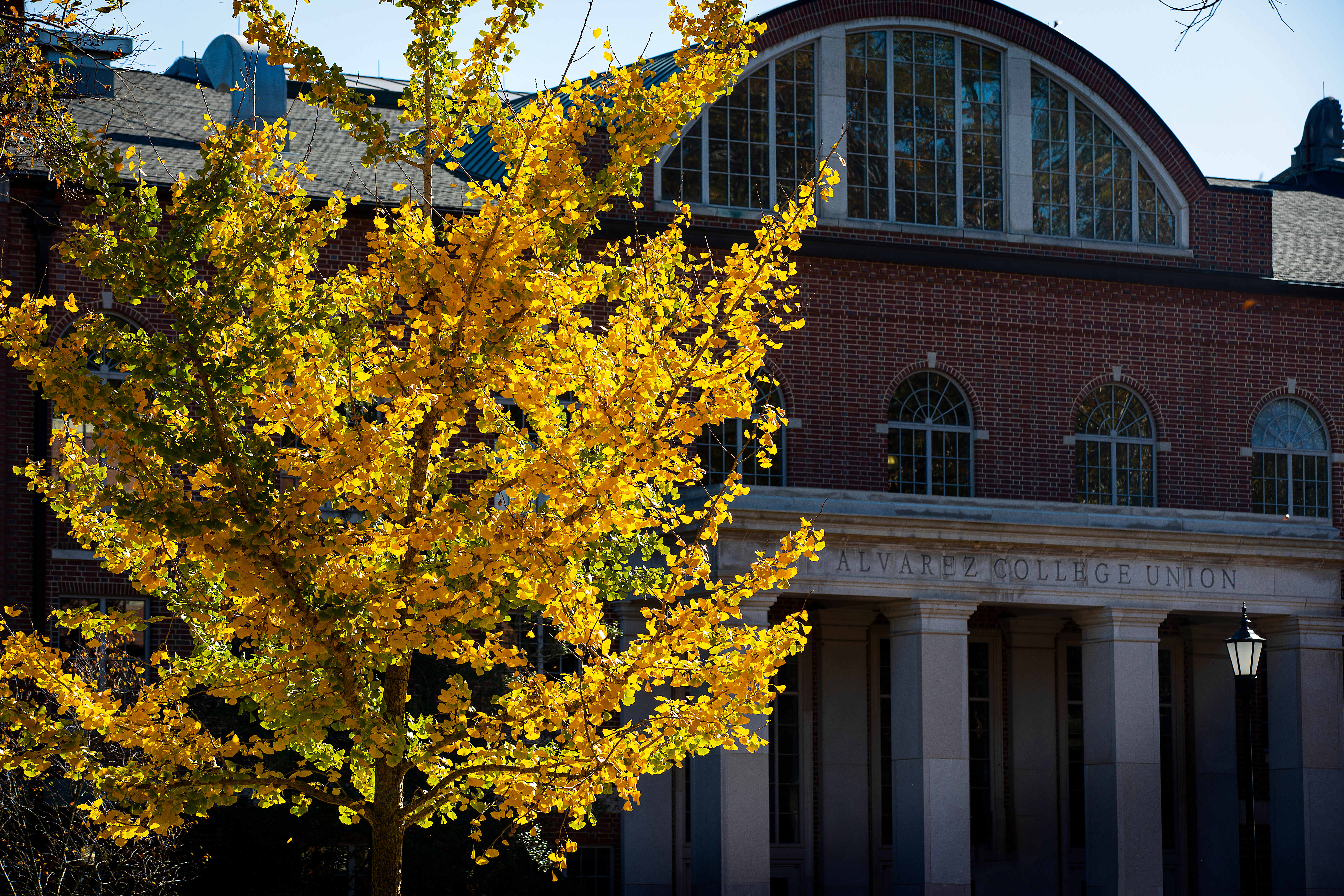Historical Timeline: From the College's Inception to the Commission on Race and Slavery
January 15, 2021
Davidson College has a rich archival collection, and we acknowledge there is much continuing work to be done using these resources. What follows is a version of historical facts presented in the Commission on Race and Slavery report, edited for brevity.
1835: Concord Presbytery authorized a committee chaired by Robert Hall Morrison, a slave owner, to raise funds for the establishment of a manual labor school.
1835–36: Historical documents report “volunteer” laborers constructed the first seven buildings using 250,000 bricks made by enslaved people on a nearby plantation.
1837: The first students arrived for classes. President Robert Hall Morrison, the two faculty, and the college’s steward (business manager) owned enslaved people.
All college presidents through Drury Lacy (1855–1860) owned slaves, as did many faculty members. Those who did not own slaves often paid slave owners on nearby plantations for their services.
1855: Maxwell Chambers, a member of the building committee of Concord Presbytery, left $260,000 to the college at the time of his death. Evidence suggests that Chambers, a planter and cotton trader from Salisbury, North Carolina, engaged in the slave trade.
1861–65: Reflecting their social, political, and economic investment in the institution of slavery, faculty and students were generally pro-secession and supported the Confederacy.
1876–1962: Following Reconstruction, the college engaged in racial discrimination and segregation consistent with local practices during the Jim Crow era.
1959: Decades of Black activism culminating in the Supreme Court mandate to integrate public schools prompted private institutions such as Davidson to examine their policies of racial exclusion.
Black employees of Davidson College remained present on campus as essential workers throughout the Jim Crow era. By employing Black workers for maintenance and service jobs while denying educational opportunities to Black students and faculty positions to Black scholars, the college perpetuated the racist hierarchy rooted in the slavery era.
1961: Reflecting changing views on race within the Presbyterian church measured against ongoing and widespread opposition to integration among Southern whites in general, Trustees voted to admit African (as opposed to American-born Black) students.
1962: Benoit (Ben) Nzengu ’66, the son of a Presbyterian missionary from the Congo, enrolled, thus integrating Davidson College. While college officials touted his academic success to news media, Nzengu encountered hostility when challenging Jim Crow in the course of his everyday life as a student.
1963: A second Congolese student, Georges Nzongola-Ntalaja ’67, enrolled. Unwelcome at local white churches, including the Presbyterian church on campus, Nzongola-Ntalaja successfully petitioned to meet the college’s chapel requirement by attending a local Black church. His activism resulted in a change to the chapel policy for all students, who were subsequently allowed to attend the Christian church of their choice.
1964: Leslie Brown ’69 and Wayne Crumwell ’68, the first Black American students, enrolled at Davidson. As early as 1967, The Davidsonian published interviews in which three of the five Black students then attending the college explained the challenges they faced because of systemic racism.
1966: Basketball recruit and later NBA star Charles “Charlie” Scott chose to attend the University of North Carolina at Chapel Hill, despite being recruited by coach Lefty Driesell, after a segregated café on Main St. refused Scott and Driesell service in the main dining area.
Nzengu became the college’s first Black graduate.
1967: To foster a sense of community and provide support in response to ongoing hostility on and off campus, Black students formed the Black Student Coalition (BSC).
1968: White students and faculty, some of whom were participating in civil rights activism in Charlotte, organized a boycott of Johnson’s Barbershop in Davidson. The successful Black-owned business had served Black students since 1963, but otherwise Ralph W. Johnson and the six Black barbers he employed cut only the hair of a white clientele during regular business hours. The boycott led Johnson to integrate his shop, but as he feared, white patrons went elsewhere and his business never recovered. Johnson recalled in his memoir that he felt set-up by white Davidson students, who had not discussed their concerns with him.
1969: Mike Maloy ’70, a star athlete recruited to play basketball, had been accepted by the Davidson chapter of Sigma Chi, becoming the first Black fraternity pledge on campus. Sigma Chi’s national office refused to recognize his membership, prompting Davidson’s Sigma Chi members to end their affiliation with the national organization.
1972: Reflecting the persistent activism of students, the Office of Admission redefined a position to devote half-time to minority recruitment.
John Wade became the first Black member of the coaching staff when hired as an assistant football coach.
1974: The college hired Charles Dockery, the first Black faculty member, into the French Department. He retired in 2002 and is now an emeritus professor. Junior Wade became the first Black head coach at the college when he assumed leadership of the baseball program.
1976: Leonard Satterwhite joined the admission team as the first full-time Black administrative staff member. He focused on minority recruitment.
1977: Denise Fanuiel ’77 became the first Black alumna of the college and the first female student to be commissioned through the college’s ROTC program.
1980: Responding to the recommendation of Black students and alumni, President Samuel Reid Spencer established the Committee on Minorities, consisting of students, coaches, faculty, and staff and charged with reducing the “segregational tendencies in the community.”
1982: The college hired Assistant Dean of Students Paula Moore Miller, the first Black administrator in the division of Student Life.
1983: Thelma C. Davidson Adair, a prominent Presbyterian educator, scholar of early childhood education, and human rights activist joined the Board of Trustees, becoming its first Black member.
1984: Responding to the leadership of Black students, particularly junior Janet Stovall ’85, President John Kuykendall established the Task Force on Racial/Ethnic Concerns. The task force’s findings and additional Black student research comprised the 77-page Project 87 report.
1985: In response to a Ku Klux Klan march on Main St., a coalition organized a successful counter-event for the campus and community on Patterson Court known as the “Solidarity Gathering.”
1987: The Davidson Black Alumni Network first met at Homecoming.
Under the leadership of the Rev. Brenda Howard Tapia, the first Black minister to serve as an assistant chaplain and a minority student counselor, the Love of Learning program offered educational opportunities for minority high school students and opportunities for Davidson students to mentor young learners.
1991: Dr. William S. Hutchings II ’78 became the first Black alumnus to serve as a Trustee.
1993: Anthony Foxx ’93 was elected the first Black student body president.
1994: Faculty established the Ethnic Studies Concentration, the culmination of more than two decades of organizing led by Black students.
1995: Professor Nancy Fairley, an anthropologist, became the first Black female scholar to earn tenure and promotion.
The college established a pre-orientation program to support minority students (now STRIDE, Students Together Reaching for Individual Development and Growth in Education).
2000s: Black students established four National Pan-Hellenic Council organizations: Alpha Phi Alpha, Kappa Alpha Psi, Alpha Kappa Alpha, and Delta Sigma Theta. Shades of Brown Dance Troupe was founded in 2002.
2007: In response to Black student activism, the Counseling Center hired Brelonda Walker as minority outreach counselor/coordinator.
2010: The Multicultural House (now the Spencer-Weinstein Center for Community and Justice) opened on Patterson Court and has since served as a meeting place and organizational hub for antiracist work on campus.
2012: Faculty of Color Caucus was organized.
2013: The Multicultural Center office (now the Center for Diversity and Inclusion) opened in the Alvarez College Union and features Chances Are, a mural created by Ambrice Miller ’09, which explores the evolution of diversity at Davidson.
Kaneisha Gaston ‘13 was celebrated for being the first Black student with deep family ties to the town of Davidson to graduate from the college.
2014: Faculty established the Department of Africana Studies.
2017: President Carol Quillen announced the creation of the Commission on Race and Slavery.
Faculty establish the new Justice, Equality and Community (JEC) requirement. Starting with the class of 2021, each student must take one course that satisfies the requirement.



